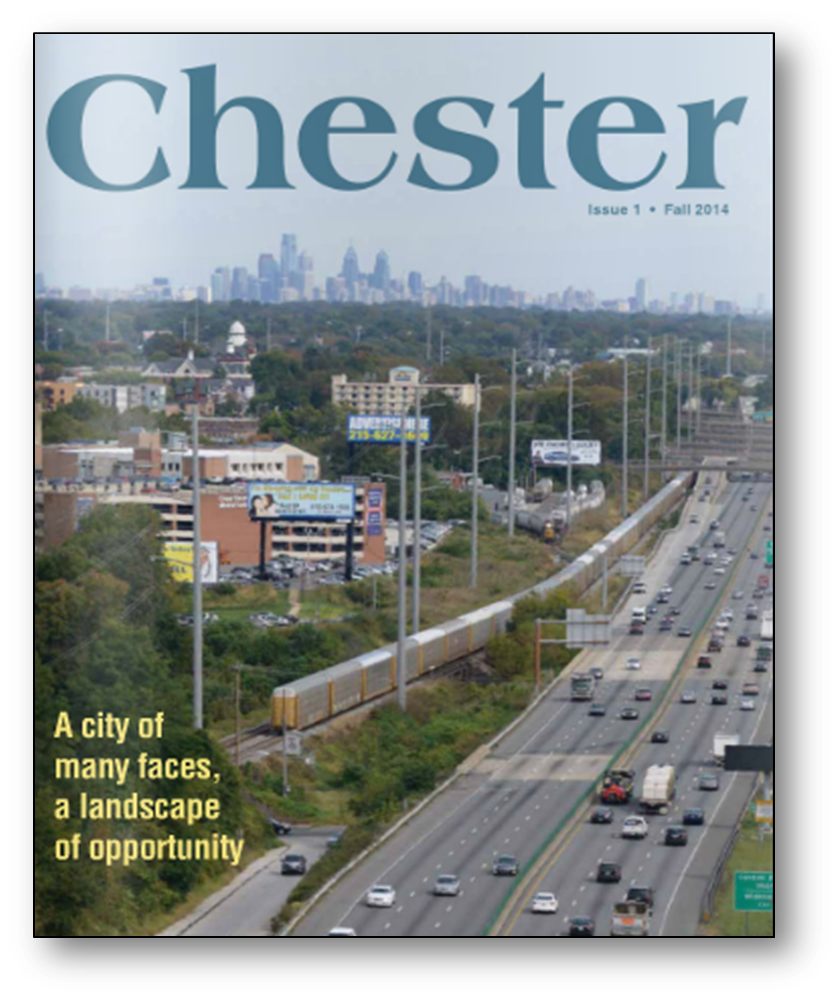Bringing
two worlds closer together
One thing
Lewis “Pete” Washington and Anne Pike have in common is their deep devotion to
the hundreds of people who come to the Chester Eastside Food Center for basic
necessities every month. Another is their exceeding modest.
“I’m just a worker
bee.” says Pete. In actuality, it’s hard to imagine the massive twice-a-week operation
going off so smoothly without Pete at the center of it. People readily follow
his directions in assembling the food and distributing it.
When Anne was
asked how much time she puts in at Chester Eastside, she said, “Just a couple
of hours a week,” a classic understatement of her volunteer time in the Food
Center alone. Somehow she neglected to mention the monthly meetings of the
Mothers’ Club she organized, along with time spent arranging for outside
speakers. And the hours involved in collecting and giving out gifts to 100
families at Christmas time. To say nothing of the seemingly endless Board and
committee meetings she faithfully attends. But in so many ways, Pete and Anne
come from different worlds.
Giving
back to his community.
Pete Washington remembers a very different East Side community where he grew up not far from the site that Chester Eastside, Inc., now calls home. “There were houses where there are vacant lots now,” he says, “and businesses - including two dry cleaners and a movie theater.” Things began to change in the 1970s, as the closing of one major industry after another took the props out from under Chester.
One of the
positive influences in Pete’s life was a loving family that made sure he stayed
inline. And the warning from a neighbor that “I’m going to tell your mom” was
often enough to head off serious trouble.
The other was
the round of activities like Boy Scouts and the church-sponsored basketball league
that did a lot more than “keep me off the streets,” in terms of education and
character development. “My
mom made sure I attended those things,” says Pete.
Now, with
child rearing more of a challenge than ever for people, those organized
activities are all the more essential, he says.
Pete went on
to earn a degree with a major in music at Cheyney University. But his talent as
a drummer led him into a playing at bars and club, “a bad environment for me,”
he says. Then an invitation to perform at a church opened up a whole new world
for him. “I haven’t played at a bar or club since.” Joining the team at Chester
Eastside, Inc., was a natural step. “I knew the Lord was calling me to do this,”
says Pete.
Together, Pete Washington and Anne Pike exemplify the special mix of gifts that make
Chester Eastside, Inc., the unique kind of agency it is.
Getting
more back than one puts in
When Anne Pike drives the seven miles from her home in Middletown to Chester Eastside, Inc., it’s like entering a whole new world. “I get a lot more out of the experience than I put in,” she readily admits.
When Anne Pike drives the seven miles from her home in Middletown to Chester Eastside, Inc., it’s like entering a whole new world. “I get a lot more out of the experience than I put in,” she readily admits.
It all started
when she heard an inspiring presentation by former Chester Eastside Pastor/Director
Tom Torosian many years ago. Having known Chester in the days when people came from
all over to shop and go to the movies, it was second nature for Anne to want to
invest something of herself in this community.
Anne’s the
kind of person who sees an opportunity and acts on it. She realized that people
who came for food had other kinds of needs as well. That prompted her to create
the Mothers’ Club. Now once a month women have an opportunity to learn new ways
of coping with the practical problems of daily life - from healthy living to
managing on a limited income.
It was a
natural step to invite Anne to join the Board of Chester Eastside, Inc. Her
hands-on experience with the people receiving the services is invaluable to the
ones making policy decisions and raising the money that makes Chester Eastside
possible.
This kind of
commitment is infectious. Now Anne’s two daughters have caught the bug and are giving
generously to the work of Chester Eastside
Together, Pete Washington and Anne Pike exemplify the special mix of gifts that make
Chester Eastside, Inc., the unique kind of agency it is.














